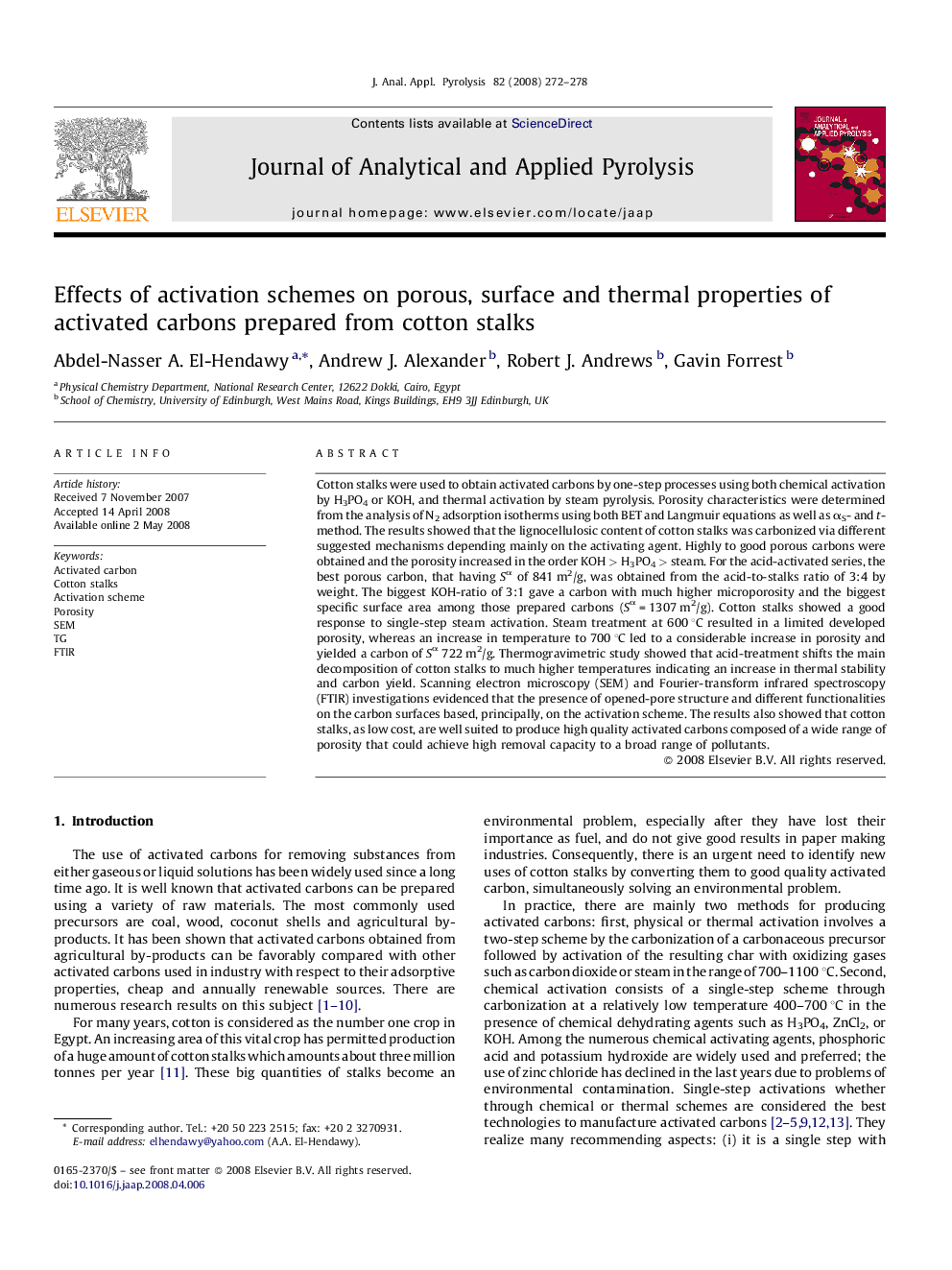| کد مقاله | کد نشریه | سال انتشار | مقاله انگلیسی | نسخه تمام متن |
|---|---|---|---|---|
| 1197275 | 964642 | 2008 | 7 صفحه PDF | دانلود رایگان |

Cotton stalks were used to obtain activated carbons by one-step processes using both chemical activation by H3PO4 or KOH, and thermal activation by steam pyrolysis. Porosity characteristics were determined from the analysis of N2 adsorption isotherms using both BET and Langmuir equations as well as αS- and t-method. The results showed that the lignocellulosic content of cotton stalks was carbonized via different suggested mechanisms depending mainly on the activating agent. Highly to good porous carbons were obtained and the porosity increased in the order KOH > H3PO4 > steam. For the acid-activated series, the best porous carbon, that having Sα of 841 m2/g, was obtained from the acid-to-stalks ratio of 3:4 by weight. The biggest KOH-ratio of 3:1 gave a carbon with much higher microporosity and the biggest specific surface area among those prepared carbons (Sα = 1307 m2/g). Cotton stalks showed a good response to single-step steam activation. Steam treatment at 600 °C resulted in a limited developed porosity, whereas an increase in temperature to 700 °C led to a considerable increase in porosity and yielded a carbon of Sα 722 m2/g. Thermogravimetric study showed that acid-treatment shifts the main decomposition of cotton stalks to much higher temperatures indicating an increase in thermal stability and carbon yield. Scanning electron microscopy (SEM) and Fourier-transform infrared spectroscopy (FTIR) investigations evidenced that the presence of opened-pore structure and different functionalities on the carbon surfaces based, principally, on the activation scheme. The results also showed that cotton stalks, as low cost, are well suited to produce high quality activated carbons composed of a wide range of porosity that could achieve high removal capacity to a broad range of pollutants.
Journal: Journal of Analytical and Applied Pyrolysis - Volume 82, Issue 2, July 2008, Pages 272–278